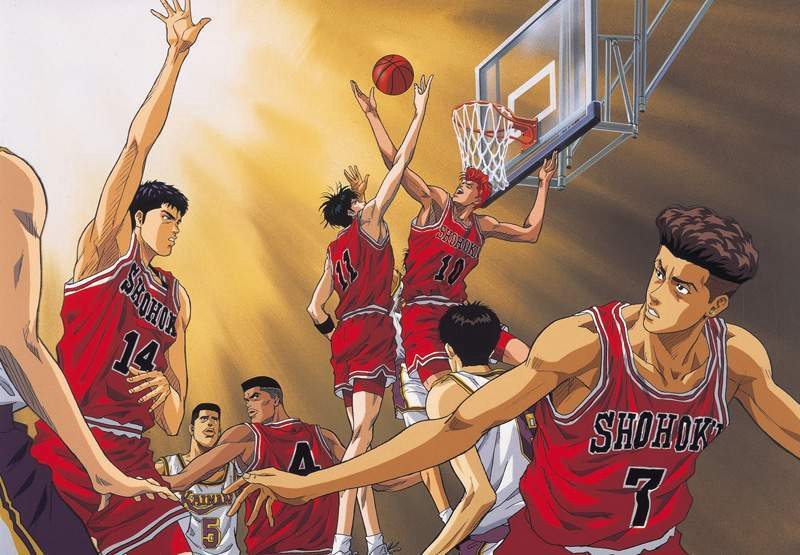
Culture
12:07, 25-Dec-2018
Farewell to Chibi Maruko-chan and our childhood!
Updated
11:37, 28-Dec-2018
By Ai Yan

A manga series may have come to an end, but not our childhood memories.
Many Chinese fans slipped down the memory lane when Japanese publisher Shueisha announced last week that the manga series "Chibi Maruko-chan", authored by late Momoko Sakura, would issue its last volume on Christmas Day.
The publishing company said that volume 17 of the popular series will be issued on December 25, marking its end. Volume 16 was published in 2009.
And it was time for the fans to bid adieu to not just their favorite animated series but also their fond memories.
"Chibi Maruko-chan" was first published in 1986 in manga magazine "Ribon".
In August, the series suffered a major setback after its author and illustrator Momoko Sakura died of breast cancer.

An image from Japanese manga series "Chibi Maruko-chan" /Photo via Douban.com
An image from Japanese manga series "Chibi Maruko-chan" /Photo via Douban.com
But why does this round-faced, bob-hair young girl earn so much love from the Chinese fans?
The story of the nine-year-old Maruko was first brought to the Chinese readers in the 1990s, during which time China had imported quite a number of Japanese animation and manga series, such as "Doraemon", "Slam Dunk", "Sailor Moon", "Saint Seiya" and "Detective Conan".
These series have accompanied the childhood of every millennial born in the 1980s and 1990s.

An image from "Slam Dunk" /Photo via Douban.com
An image from "Slam Dunk" /Photo via Douban.com
"Chibi Maruko-chan" is about the daily life of Maruko, a nine-year-old girl, and her family and friends. She is the youngest daughter of a modest Japanese family, and she is never depicted as a role model.
"She is not perfect, like us when we were nine years old. She has daydreams all the time, and she is naughty. She would occasionally reluctant to go to school, and she sleeps late in the morning. She is afraid of the exams and she would leave homework until the last day of the holiday…" read a comment on a WeChat article.
"But we can feel her flesh and blood because she is us. We can find her in ourselves in our childhood."

A poster of "Chibi Maruko-chan: The Boy from Italy" /VCG Photo
A poster of "Chibi Maruko-chan: The Boy from Italy" /VCG Photo
According to reports, the character "Maruko" was originally the author's "essays in manga form." Many stories were inspired by her real life and some characters were also based on her friends and family.
"From the anime series on TV to the film in the cinema, something that never changed is the laugh it brought to me. Maruko is still the little girl who is innocent and lovely, but I have grown up into an indifferent adult," a fan wrote on Mtime, a Chinese film database website under Wanda Cinema Line Group.

An image from "Detective Conan" /Photo via Douban.com
An image from "Detective Conan" /Photo via Douban.com
For many Chinese youngsters born in the 1980s and 1990s, imported cartoons and manga series have formed a large part of their childhood entertainment. The Japanese cartoon characters, therefore, become part of the collective memories of several generations.
They have also inspired the now booming entertainment industry of ACG subcultures (including animation, comics, and games). According to a report issued by ASKCI Consulting Co., an industrial research planning and consulting company, the total output value of China's ACG industry is expected to reach 176.5 billion yuan, with a 16.3-percent year-on-year growth.

A poster from "Doraemon" /Photo via Douban.com
A poster from "Doraemon" /Photo via Douban.com
In recent years, as the post-90s generation and the millennials have become the main online users, old manga and animation series have earned new vitality by being posted online, triggering a flood of remembrance and nostalgic emotion from time to time.
Many animation films adapted from the manga series were also brought to China. The box office of the new installment of the "Detective Conon" films, "Zero the Enforcer", has exceeded 100 million yuan (14.5 million U.S. dollars). Previously, the animation film "Doraemon: Stand By Me" also garnered a box office of at least 526 million yuan (76.2 million U.S. dollars), which is the second best for all imported animation films.

A poster of "Sailor Moon" /Photo via Douban.com
A poster of "Sailor Moon" /Photo via Douban.com
For many fans, however, the meaning of the manga series and its main characters is certainly not only about the figures and the values they create, but about the golden memories that will never come to an end.
(Head image designing by Yu Peng)

SITEMAP
Copyright © 2018 CGTN. Beijing ICP prepared NO.16065310-3
Copyright © 2018 CGTN. Beijing ICP prepared NO.16065310-3